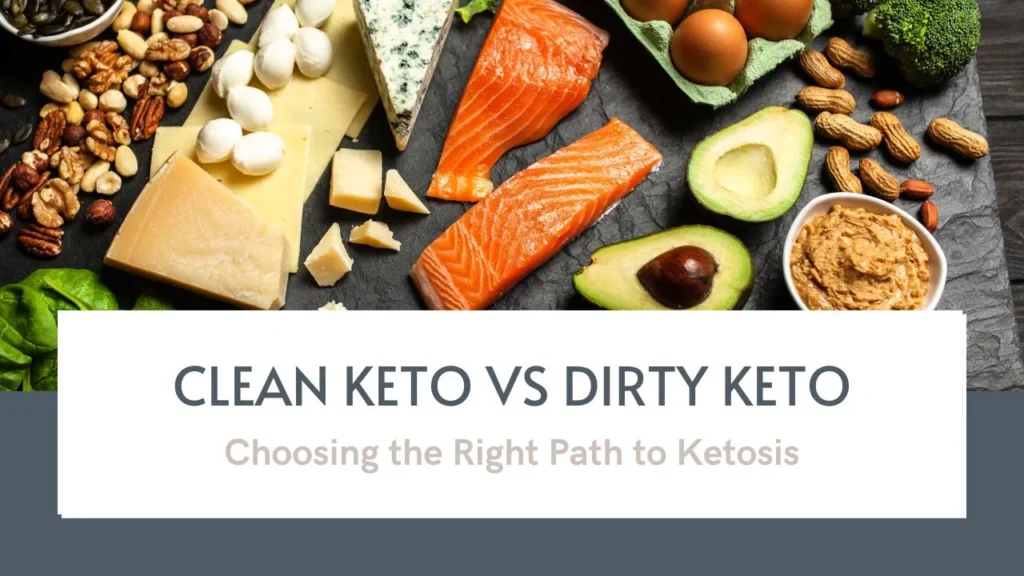Clean Keto vs Dirty Keto: Understanding the Pros and Cons of Each Approach
The ketogenic diet has gained immense popularity in recent years for its ability to promote weight loss and improve overall health. However, within the realm of the ketogenic diet, there are two main approaches that individuals can take: clean keto and dirty keto. Both approaches involve restricting carbohydrates and increasing fat intake to induce a state of ketosis, but they differ in the quality of foods consumed. In this article, we will explore the differences between clean keto and dirty keto, as well as the pros and cons of each approach.
Clean Keto
Clean keto is characterized by consuming whole, nutrient-dense foods that are minimally processed and free of artificial ingredients. This approach focuses on eating high-quality fats, such as avocados, nuts, seeds, and olive oil, as well as lean proteins, like fish, poultry, and grass-fed beef. Clean keto also emphasizes consuming plenty of low-carbohydrate vegetables, such as leafy greens, broccoli, and cauliflower.
Pros of Clean Keto:
1. Nutrient-Dense Foods: Clean keto promotes the consumption of foods that are rich in vitamins, minerals, and antioxidants, which are essential for overall health and well-being.
2. Improved Digestion: By avoiding processed foods and artificial ingredients, clean keto can help improve digestion and reduce inflammation in the gut.
3. Sustainable weight loss: Because clean keto focuses on whole foods and balanced nutrition, it can lead to sustainable weight loss and long-term health benefits.
Cons of Clean Keto:
1. Higher Cost: Eating high-quality, organic foods can be more expensive than processed, conventional options, which may make clean keto less accessible to some individuals.
2. Strict Food Rules: Clean keto can be more restrictive than dirty keto, as it limits the consumption of processed foods and artificial ingredients.
Dirty Keto
Dirty keto, on the other hand, is characterized by consuming foods that are high in fat and low in carbohydrates, regardless of their quality. This approach allows for the consumption of processed and artificial foods, such as bacon, sausage, cheese, and low-carb snacks. While dirty keto may lead to weight loss and ketosis, it may not provide the same health benefits as clean keto due to the lower quality of foods consumed.
Pros of Dirty Keto:
1. Convenience: Dirty keto allows for the consumption of processed and convenient foods, which may be more accessible and easier to incorporate into a busy lifestyle.
2. weight loss: Like clean keto, dirty keto can lead to weight loss and improved body composition by restricting carbohydrates and increasing fat intake.
3. Flexibility: Dirty keto is less restrictive than clean keto, as it allows for the consumption of a wider variety of foods, including processed and artificial options.
Cons of Dirty Keto:
1. Nutrient Deficiencies: Consuming processed and low-quality foods on a regular basis may lead to nutrient deficiencies and other health issues in the long term.
2. Inflammation: Dirty keto may contribute to inflammation in the body due to the consumption of processed foods and artificial ingredients.
3. Long-Term Health Risks: While dirty keto may lead to short-term weight loss, it may not provide the same long-term health benefits as clean keto, as it lacks the nutrient density and quality of foods consumed.
FAQs
1. Is it possible to combine clean and dirty keto?
Yes, it is possible to combine elements of both clean and dirty keto to create a more flexible approach that meets your individual needs and preferences. For example, you could focus on eating clean keto most of the time, but allow for occasional indulgences in dirty keto foods.
2. Which approach is best for weight loss?
Both clean and dirty keto can be effective for weight loss, as they both involve restricting carbohydrates and increasing fat intake to induce ketosis. However, clean keto may provide additional health benefits due to the higher quality of foods consumed.
3. Can you transition from dirty keto to clean keto?
Yes, it is possible to transition from dirty keto to clean keto by gradually incorporating more whole, nutrient-dense foods into your diet and reducing the consumption of processed and artificial ingredients. This transition may help improve your overall health and well-being in the long term.
4. Are there any specific guidelines for clean and dirty keto?
While there are general guidelines for clean and dirty keto, it is important to listen to your body and adjust your diet based on your individual needs and preferences. Some individuals may thrive on a strict clean keto diet, while others may prefer a more flexible approach that includes some dirty keto foods.
In conclusion, both clean and dirty keto can be effective approaches for weight loss and improved health, but they differ in the quality of foods consumed. Clean keto emphasizes whole, nutrient-dense foods, while dirty keto allows for the consumption of processed and artificial options. By understanding the pros and cons of each approach, you can make an informed decision about which approach is best for you. Remember to listen to your body and prioritize your health and well-being above all else.


